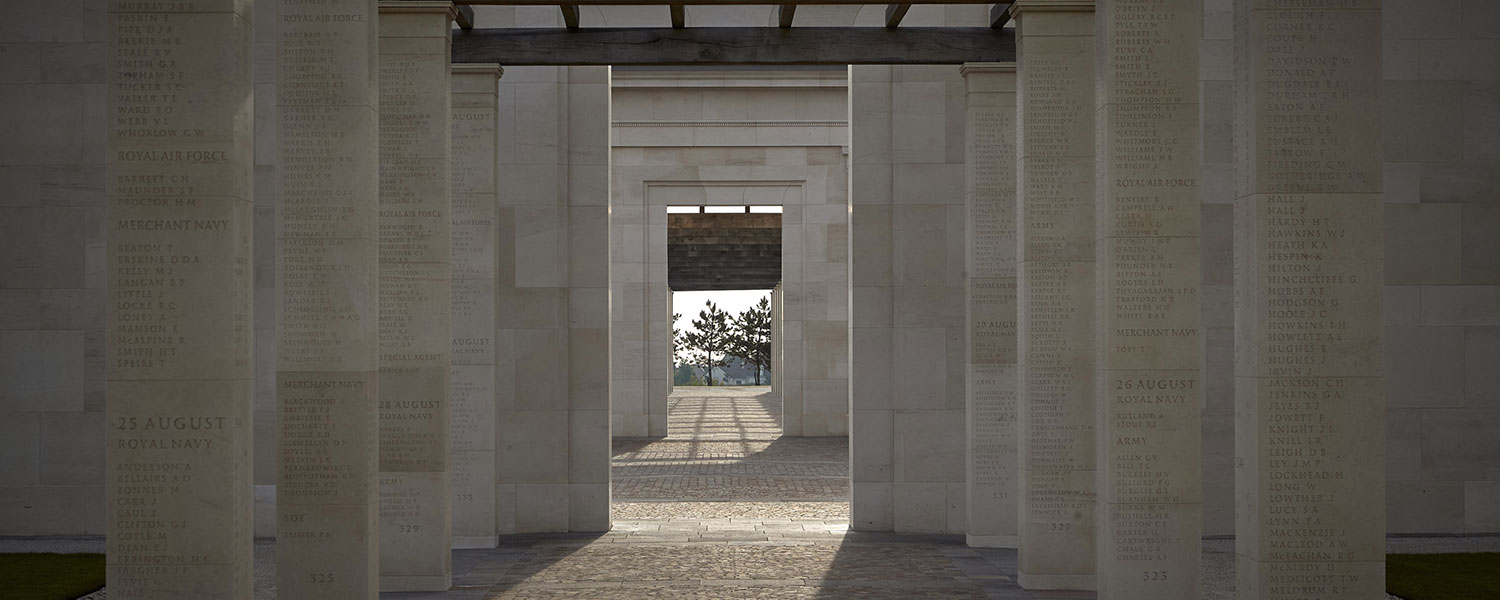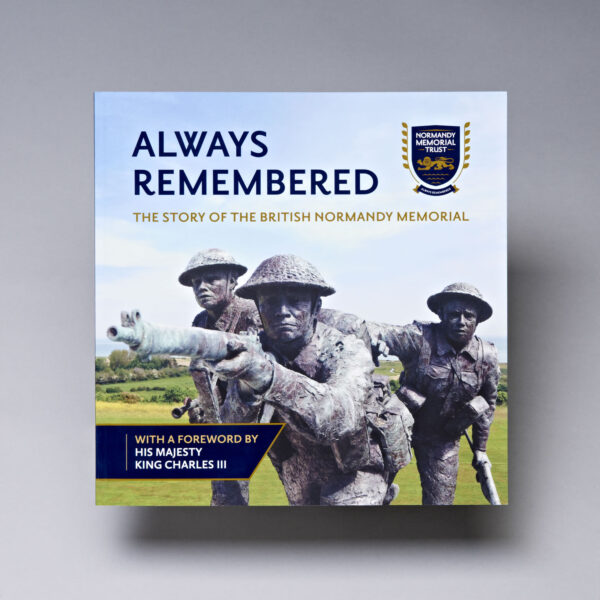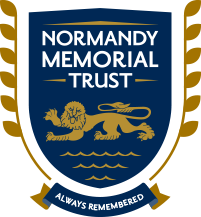Roll of Honour
The British Normandy Memorial bears the names of 22,442 individuals: British personnel and those of other nationalities who were serving in British units, who died while taking part in D-Day and the Battle of Normandy. This includes people from more than 30 different countries. Individuals who were serving in units (such as ships, army battalions or air force squadrons) that belonged to other national forces are not included, though they often fought closely alongside British forces.
If you would like to submit information about your relative to be uploaded to our website and app, and complement the information supplied on the Roll of Honour record, you can do by sending us a maximum of 500 words and up to 5 photos to contact@britishnormandymemorial.org.
Further information about the Roll of Honour and the story of its creation can be found below this search box.
Many of those named on the Memorial are buried or commemorated in Normandy. “Commemorated” in this case means that the individual does not have a known grave because their body was not recovered, or if recovered it was not identified.
There are also many individuals on the British Normandy Memorial who are buried or commemorated outside Normandy, but who died on operations connected to the Normandy campaign. These include personnel of the Royal Navy, Royal Marines and Merchant Navy who were killed while supporting the Normandy landings, who are commemorated on memorials in the UK because they have no known grave.
The Memorial bears the names of Royal Air Force personnel who lost their lives on missions supporting the campaign, which took place all over France and the surrounding seas. For example, aircraft operated to prevent German naval forces interfering with the landings, to weaken the German armed forces in France, and to slow the movement of German reinforcements to the battlefield.
Secret agents and special forces personnel operated behind enemy lines across France in support of the campaign, and are also included on the Memorial. These include members of the Special Air Service (SAS) and Special Operations Executive (SOE), amongst others.
“We have taken great care in researching the Roll of Honour, but welcome any comments or suggestions for anyone that you believe may have been omitted from it. To get in touch about the Roll of Honour you can email contact@britishnormandymemorial.org.
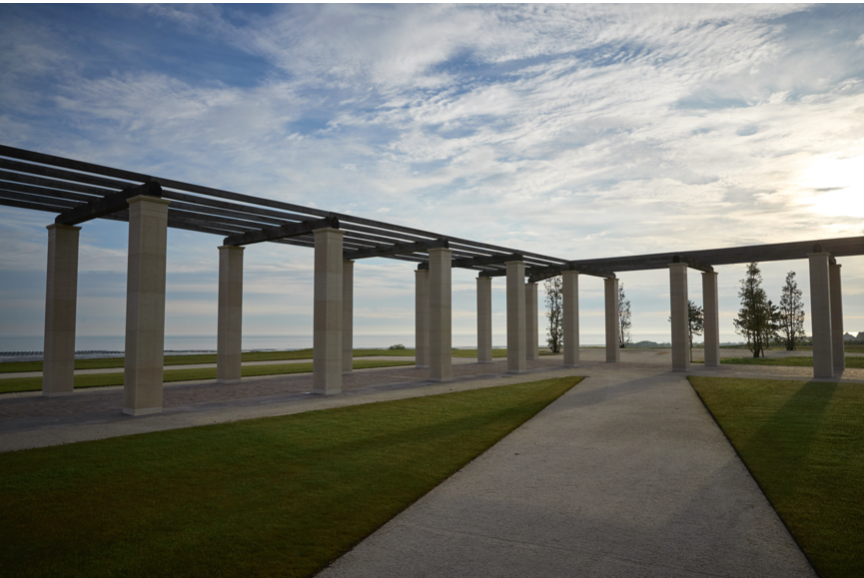
The arrangement of names on the British Normandy Memorial
The names on the Memorial are listed day-by-day in chronological order. Within each day, they are grouped by branches of the armed forces. The chronological arrangement of names reflects the story of each day’s fighting. It means that the names of comrades killed on the same day are listed alongside each other, and often near the names of those from other units or forces that they were fighting alongside when they lost their lives.
Those branches are:
Royal Navy, Army, Royal Air Force, Merchant Navy, Special Operations Executive, Special Agents (meaning men of the Jedburgh and Sussex Teams) and War Correspondents (civilian war correspondents accompanying the armed forces).
The Memorial lists each person’s surname, initials, rank and age. More information about each individual, such as the unit that they belonged to, is available on the Roll of Honour.
The Roll of Honour begins on D-Day, 6 June 1944, and ends on 31 August 1944. There is no single ‘official’ date for the end of the Battle of Normandy, but there are several dates that are often used. These include the final Allied encirclement of German forces in Normandy on 21 August (the closure of the Falaise Pocket), the liberation of Paris on 25 August, or 1 September when General Eisenhower took over direct command of the Allied armies on the continent.
The Roll of Honour continues until 31 August so as to include those personnel who, in the last days of that month, were killed during the final fighting in Normandy (which continued until 30 August), or who died of wounds received on previous days in connection with the campaign.
D-Day and the Normandy campaign did not take place in isolation, and sit within the wider context of the Second World War. Over the months and indeed years prior to D-Day, many British and other Allied personnel died while taking part in operations that prepared the way for the campaign either directly or indirectly. Others died at a later date from injuries inflicted during the campaign, or indeed suffered for many years from the effects of physical or psychological wounds.
The British Normandy Memorial acts as the national focus for remembering the British participation in the Normandy campaign as a whole, and represents all those who served during and contributed to the campaign.
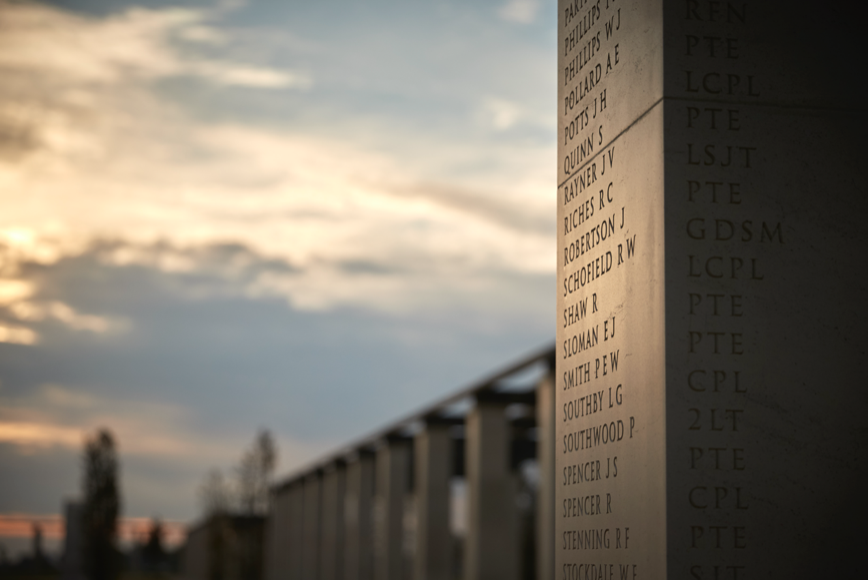
The research process
The Normandy Memorial Trust’s starting point, and the main source of information for the British Normandy Memorial’s Roll of Honour, was the records of the Commonwealth War Graves Commission (CWGC). The CWGC is responsible for the graves and memorials of British and Commonwealth personnel in Normandy and elsewhere around the world. The Trust wishes to acknowledge the support provided by the CWGC in this respect.
The Trust then carried out further research using a wide variety of sources, and is grateful for the support received from and information made available by many institutions and individuals. Where necessary, information was cross-checked with multiple sources to ensure accuracy. We have taken great care in carrying out this research, but welcome any comments or suggestions for anyone that you believe may have been omitted from the Roll of Honour.
Lead Historical Researcher: Jane Furlong
Historian: Andrew Whitmarsh
Sources used in creating the Roll of Honour
Some of the sources most frequently consulted in creating the Roll of Honour are listed below. A wide range of other books, archive and internet sources were also used in research. There are too many to list them all here, but they included the websites of many armed forces museums and associations. Members of the public have also contacted us with information about individuals and units, for which we are grateful.
Aircrew Remembered website
Ancestry website
Air Historical Branch (RAF), Ministry of Defence
Aviation-safety.net website
Australian War Memorial roll of honour
BBC WW2 People’s War website
Canadian Virtual War Memorial
CombinedOps.com website
Commando Veterans Archive website
Commonwealth War Graves Commission
Fallen Heroes of Normandy website
Find My Past website
France Crashes 39-45 website
Francaislibres.net website
International Bomber Command Centre online losses database
Memoire des Hommes website
Naval History.net website
New Zealand War Memorial Museum online cenotaph
Para Data website
Pegasus Archive website
Plan Sussex website
RAF Commands website
Special Forces RoH.com website
UK National Archives
uboat.net website
Wrecksite.eu website
WW2 Talk online forum




